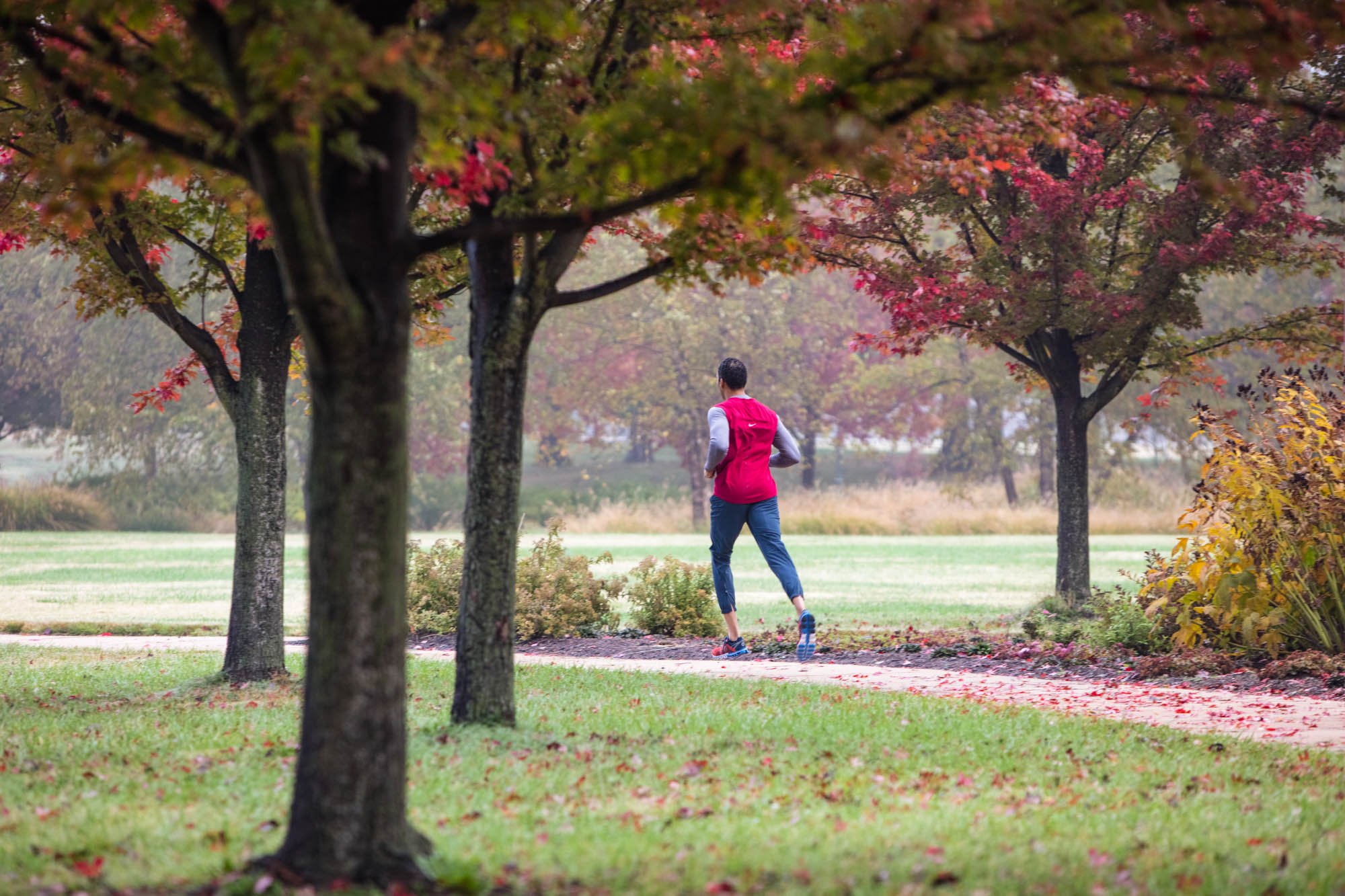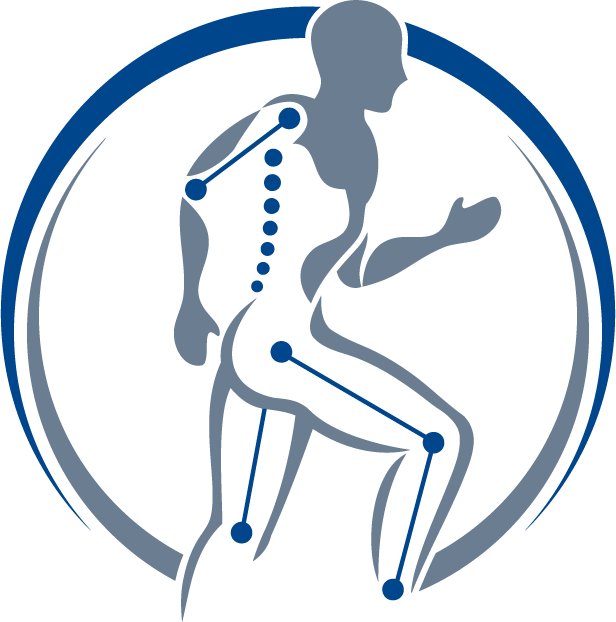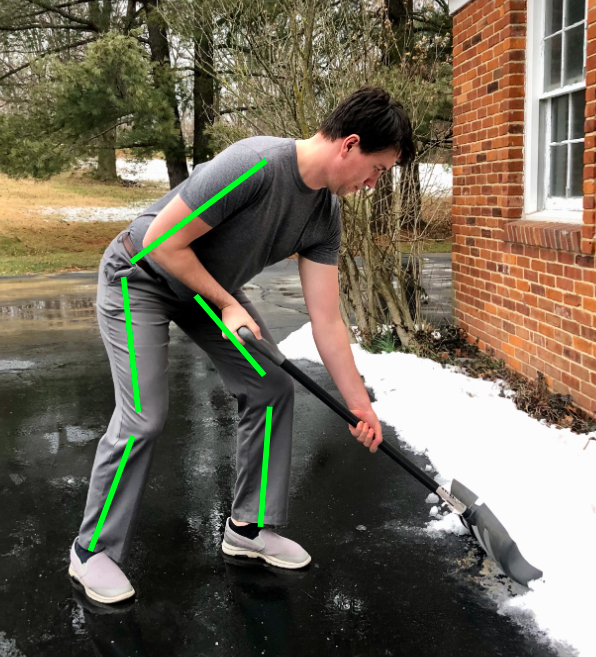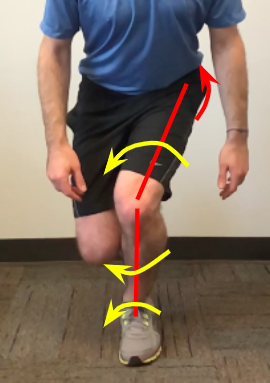
LEARN
Precision Physical Therapy Blog
Return to Running After Having a Baby
So, you (or someone you know and love) just had a baby and you are cleared to begin exercise at your six-week postpartum follow-up. Now what? You may feel lost or uneasy as to how to return to running, an activity that fuels you and is vital for your mental wellbeing. Maybe you have already returned to running and have concerns you want addressed. This article can provide you with a framework for safe return to running.
Running biomechanics: Indication of ITB Stiffness
Iliotibial band (ITB) friction syndrome (a common cause of knee pain) is the second most common injury afflicting runners - second to patellofemoral pain syndrome, another type of knee pain. In runners, the ITB can become tight due to overuse of the tensor fasciae latae (TFL) muscle that attaches into it and insufficient use of other hip flexors. While sometimes it is difficult to self assess and identify if your TFL/ITB complex is tight relative to the rest of the hip flexors, there is one sign present in running that is a clear indicator of TFL tension and overuse. This is tibial lateral rotation during swing phase of running.
Can you fix slouched posture?
We all know what it looks like when we don’t stand up straight, but it’s hard to know what to do to fix slouched posture and whether it’s even important to focus on. Most people don’t realize that spine and joint pain is more often caused by bad posture than vigorous exercise. Fixing your posture can get rid of pain and make you look and feel better.
SI Joint Pain and Pregnancy
Our bodies are amazing. During pregnancy women are able to build a baby, as well as physically adapt to the stresses of holding the baby within us. When we pause and consider how much change a woman’s body goes through during this time, it is truly impressive. With so much change, it makes sense that there are aches and pains along the way. One of the most common pains during pregnancy is sacroiliac joint pain (SIJ).
Are your hamstring stretches effective?
Do you remember the ‘sit and reach’ test from the presidential fitness program in grade school? We would all line up and see who could reach to and past their feet as a measure of flexibility. We thought we were seeing who had the most flexible hamstrings, however this test is not actually specific for hamstring muscle length! You can reach to your toes and still have moderately short hamstrings if all the ‘reach’ in the test is coming from your spine.
Running biomechanics: Where should my foot strike?
While it may be frustrating to hear foot strike advice change as research is published, know that there are still some constants when it comes to biomechanics at the moment your foot hits the ground. Instead of focusing on which part of the foot contacts the ground, you may consider thinking about how far the foot contracts the ground in front of the knee and how large the angle is from the bottom of the foot to the ground. These are two things that decrease your injury risk and are very easy to identify with slow motion video. You can even assess them yourself.
To stretch or not to stretch?: Muscle vs. Nerve pain, identifying the difference
When various aches and pains arise it can be hard to know when to move away from google and seek professional advice. One of the common strategies we find patients use to self-treat their pain is to stretch the area that is painful. It is easy to find advice online with “5 best neck stretches” or “how to treat your hip pain at home”. As with all general advice, sometimes this is helpful and other times frustrating. Whether or not it’s helpful often depends on the cause of the pain. A common mistake is stretching pain that is coming from the nerve and not the muscle.
Another Look at Hip Drop
Hands and knees (quadruped) exercises allow us to challenge our ability to control spine/pelvis posture with less impact from gravity. This is a great position to challenge and fine tune our movement quality and strength. Quadruped exercises are both common in strengthening programs and important for developing core stability. But many of us are not sure what makes “good form” when completing a quadruped exercise.
Running: Heel Raises, How & Why
Calf weakness is a common issue in runners and can lead to pain and injuries in the foot and lower leg. Calf weakness presents in multiple ways when assessing a runner’s gait mechanics. One of those ways is when the knee travels excessively forward of the toe at mid stance during gait (also known as increased anterior tibial translation). It is true that there are other movement problems that contribute to increased anterior tibial translation at mid stance, however the key contributor we will discuss today is calf weakness. Below you can see a still shot of normal and excessive tibial translation.
What those with chiseled abs can learn from today’s PB instructor
Our body is built in alternating stable and mobile segments. In general we want to improve stability of the ‘stable segments’ and improve mobility of the ‘mobile segments’. When we break down and allow our mobile segments to get stiff, it forces our stable segments to move too easily. The lumbar spine is sandwiched between two mobile segments, the thoracic spine (our primary source of rotation in our spine/ torso) and the hip joint (that also allows for rotation as a ball and socket joint). The lumbar spine (low back) is designed as a stable segment, not as a rotational (or mobile) segment.
How to help your loved one shovel snow safely
All physical activities require a balance of strength, flexibility, and coordination, together they make up our movement patterns. Snow shoveling is one of those activities that require strength and coordination or it can lead to problems! Indeed what inspired me to write this blog was my husband's significantly improved snow shoveling posture following his last few years of improving his movement quality with strength training.
How Sitting Posture Impacts Movement Health
While most of the time we focus this blog on moving with good quality during fitness, it is also important to be sitting well. Poor sitting posture commonly leads to aches and pains that present themselves on a run, in fitness class, at the gym and in managing our homes. With an increased number of people working from home, navigating new work spaces and poorly fitting furniture, now is a great time to assess your sitting posture and make improvements for joint health. Today we will discuss a few of these sitting patterns that lead to movement pains, review why they matter, and postulate why they are happening.
Running: Dynamic Knee Valgus
Limited ankle range of motion and gluteal weakness: two of the most common contributors to injuries that we see in runners. These impairments often lead to a movement pattern called dynamic knee valgus and knee pain in runners. This is especially true in those who are new to running or returning after a long break. This blog will describe the knee valgus pattern: What is it? How do you fix it? Why does it matter?
Pure Barre: Stability While Walking
At Precision PT, one of our favorite things about Pure Barre is the emphasis on quality gluteal strengthening. The gluteal strengthening and abdominal strengthening done in Pure Barre can be consciously used to correct poor walking habits. We frequently work with patients to change their movement patterns with walking as a way to improve back, hip and knee pain. The most common problems we see with walking patterns (at the pelvis) have to do with hip drop and pelvic rotation.
Pure Barre: Knee Valgus Posture
You may have heard your pure barre instructors discuss knee posture during class, particularly during lunging positions. Knee posture is one of those areas that is a focus of fitness classes but commonly overlooked in daily life. The knee joint is a hinge joint - think about how it should open and close. While it can rotate, in general rotation of the knee creates problems. Fortunately, the knee is well studied! There are lots of research publications available on knee posture and its impact on osteoarthritis, meniscus tears, ACL tears and patellofemoral pain.
Pure Barre: How to Correct Forward Head Posture during Function and Fitness
Neck posture can be tricky to change Years of desk work and cell phone use leaves many of us with a forward head posture. When we allow our head to move into a forward position, over time the tissues in the back of the neck become short and stiff and the tissues in the front of the neck become long and weak. This imbalance can be challenging to correct.It requires a careful mix of stretching, strengthening, and coordination training in addition to unlearning the posture habits that caused it in the first place!
Runners: Why the inside of your foot hurts - 3 potential causes
One of the more common running gait patterns associated with foot pain is excessive ankle pronation. We typically see this as the leg is accepting body weight after initial contact moving into mid stance. Ankle pronation is when the arch of the foot flattens toward the ground. Ankle pronation is a normal function of the foot and a good thing for our running. When ankle pronation becomes excessive we start to see injuries such as posterior tibialis tendonitis, achilles tendonitis, plantar fasciitis, tarsal tunnel and medial tibial stress syndrome.
Pure Barre: Foot Posture Corrections
When we grow up thinking about posture, we often think of our low back and shoulders. Rarely do we consider the posture of our feet. As the base of our whole body, foot posture can impact the alignment of many joints. The arch of the foot is a shock absorption system. It should be rigid when we need stability and flatten when we absorb shock. In general, people fall into one of three foot types: pronated, neutral or supinated.
Pure Barre at Home: Protecting the knee joint and keeping up with quad strengthening
Changing one’s fitness routine to be completed entirely at home creates a number of challenges, from crying kids, to pets licking your face, the dog hair on the rug and spotty internet. It’s been a challenge for all of us and I thought this month we could provide you with some simple modifications to make exercising at home a little more enjoyable, at least for your knees.




















